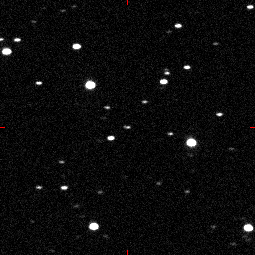Near-Earth object
|
|
Near-Earth objects (NEO) are asteroids, comets and large meteoroids whose orbit intersects Earth's orbit and which may therefore pose a collision danger. Due to their size and proximity, NEOs are also more easily accessible for spacecraft from Earth and are important for future scientific investigation and commercial development. In fact, some near-Earth asteroids can be reached with much less ΔV (change in velocity) than the Moon.
In the United States, NASA has a congressional mandate to catalogue all NEOs that are at least 1 kilometer (0.6 miles) wide. At this size and larger, an impacting NEO would cause catastrophic local damage and significant to severe global consequences. Approximately 500 of these NEOs have been detected. According to the most widely accepted estimates, there are ca. 500 more that have not been found yet. The United States, European Union and other nations are currently scanning for NEOs in an effort called Spaceguard. Currently efforts are under way to use an existing telescope in Australia to cover the ~30% of the sky that is not currently surveyed.
Classification of near-Earth objects by kind and size
- Meteoroids < 50 m diameter
- Asteroids > 50 m diameter. See Near-Earth asteroid.
- Comets
| Contents |
Number of near-earth objects
To April 18, 2004, 2808 NEOs had been discovered. These were 49 near-earth comets, 217 Aten asteroids, 1114 Amor asteroids and 1427 Apollo asteroids. 708 of them had diameters over 1 km.
Estimating the risks
There are two schemes for classification of impact hazards:
- the simple Torino scale
- and the more complex Palermo Technical Impact Hazard Scale
On 25 December 2004, 2004 MN4 was assigned a 4 on the Torino scale, the highest rating so far. At 27 December 2004 there was a 2.7% chance of Earth impact on the 13 April 2029. As of December 28, 2004, the risk of impact had dropped off to nearly zero (and has a 0 on the Torino scale). The only non-zero Torino rating is in 2053, which is 1, and is expected to drop as well.
Currently, the only other known NEO with a Palermo scale value greater than zero is (29075) 1950 DA, which is predicted to pass very close to or collide with the Earth (p≤0.003) in the year 2880. If this collision were to happen, the energy released by a collision with (29075) 1950 DA would cause an Extinction event which would destroy most life on the planet. However, humanity has over 800 years to refine its estimates of the orbit of (29075) 1950 DA, and to deflect it if necessary.
NASA maintains a continuously updated web page of the most significant NEO threats (http://neo.jpl.nasa.gov/risk/) in the next 100 years - all or nearly all of which are highly likely to drop off the list eventually as more data comes in enabling more accurate predictions; however, that page does not, of course, include 1950 DA, because that will not strike for at least 800 years.
NEO near misses
March 18, 2004 saw the closest recorded approach of a near-Earth object. Asteroid 2004 FH, about 30 metres (100 feet) in diameter, passed approximately 43,000 kilometers (26,500 miles) above the earth's surface (nearly ten times closer than the Moon). Astronomers had detected it just three days before. While the time from detection to nearest approach may seem short, Asteroid 2004 FH is extremely small. A NEO with globally cataclysmic potential would presumably be sighted much earlier.
Only two weeks later on March 31, 2004, 2004 FU162 set a new record for closest recorded approach, passing Earth only 6,500 km (4,000 mi) away (nearly sixty times closer than the Moon). It was detected only hours before its closest approach but was very small, less than 10 metres (33 feet). It is expected that it would have harmlessly disintegrated in the atmosphere if it had hit the Earth.
Objects as small as these two are (somewhat arbitrarily) classified as meteoroids rather than asteroids.
See also
External links
- The JPL Near Earth Object Program:
- The Jet Propulsion Laboratory's NEO website (http://neo.jpl.nasa.gov)
- Update on number of NEOs (http://neo.jpl.nasa.gov/neo/number.html)
- Top risk estimates for known NEOs over the next 100 years (http://neo.jpl.nasa.gov/risk/)
- A special case: asteroid 1950 DA (http://neo.jpl.nasa.gov/1950da/)
- The UK NEO Information Centre (http://www.nearearthobjects.co.uk/simple_template.cfm?code=home_intro)
| The minor planets |
| Vulcanoids | Main belt | Groups and families | Near-Earth objects | Jupiter Trojans |
| Centaurs | Trans-Neptunians | Damocloids | Comets | Kuiper belt | Oort cloud |
| (For other objects and regions, see: Binary asteroids, Asteroid moons and the Solar system) |
| (For a complete listing, see: List of asteroids. For pronunciation, see: Pronunciation of asteroid names.) |
de:Near Earth Object fr:Objet géocroiseur ja:地球近傍小惑星 zh:近地天体

